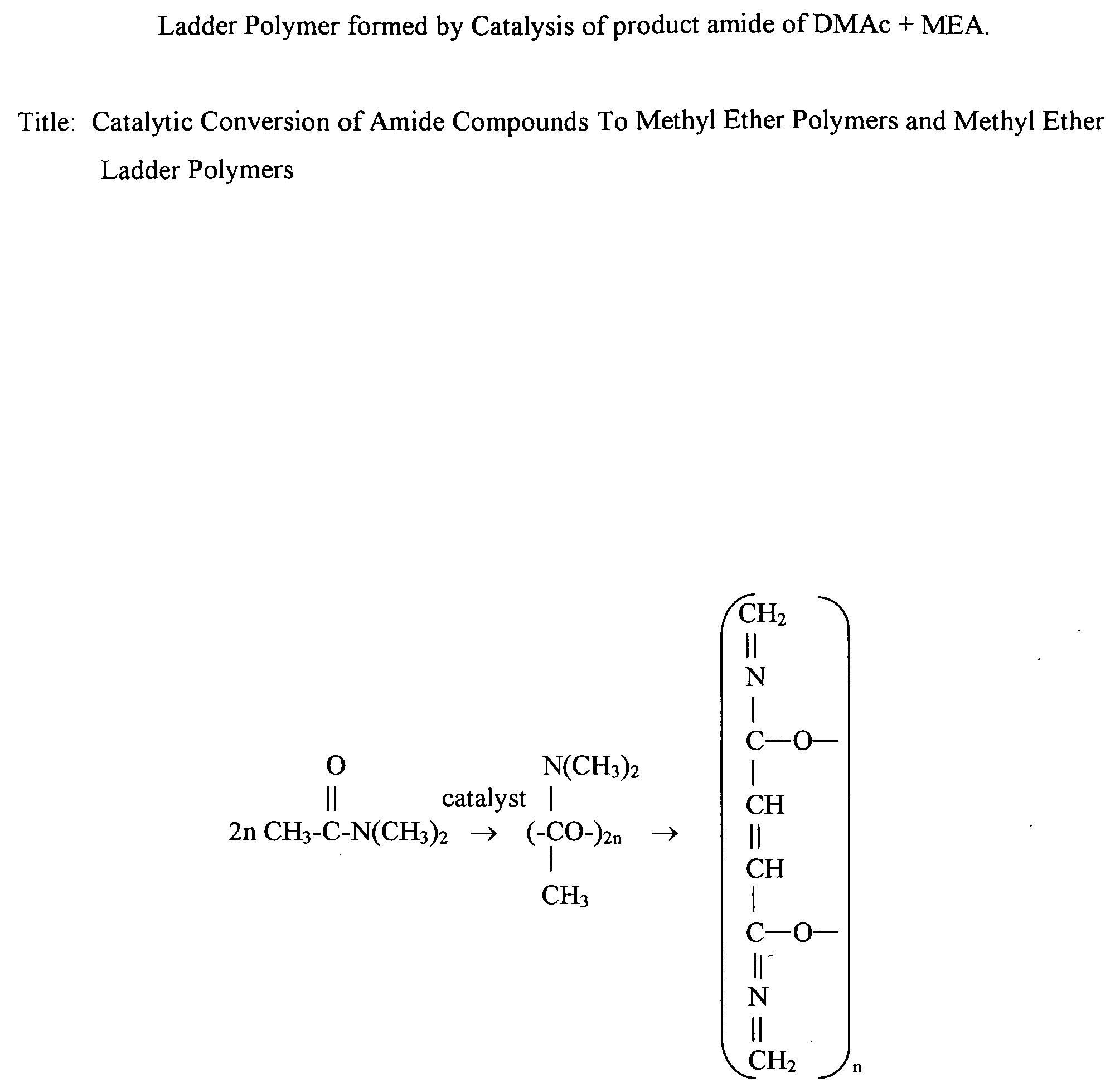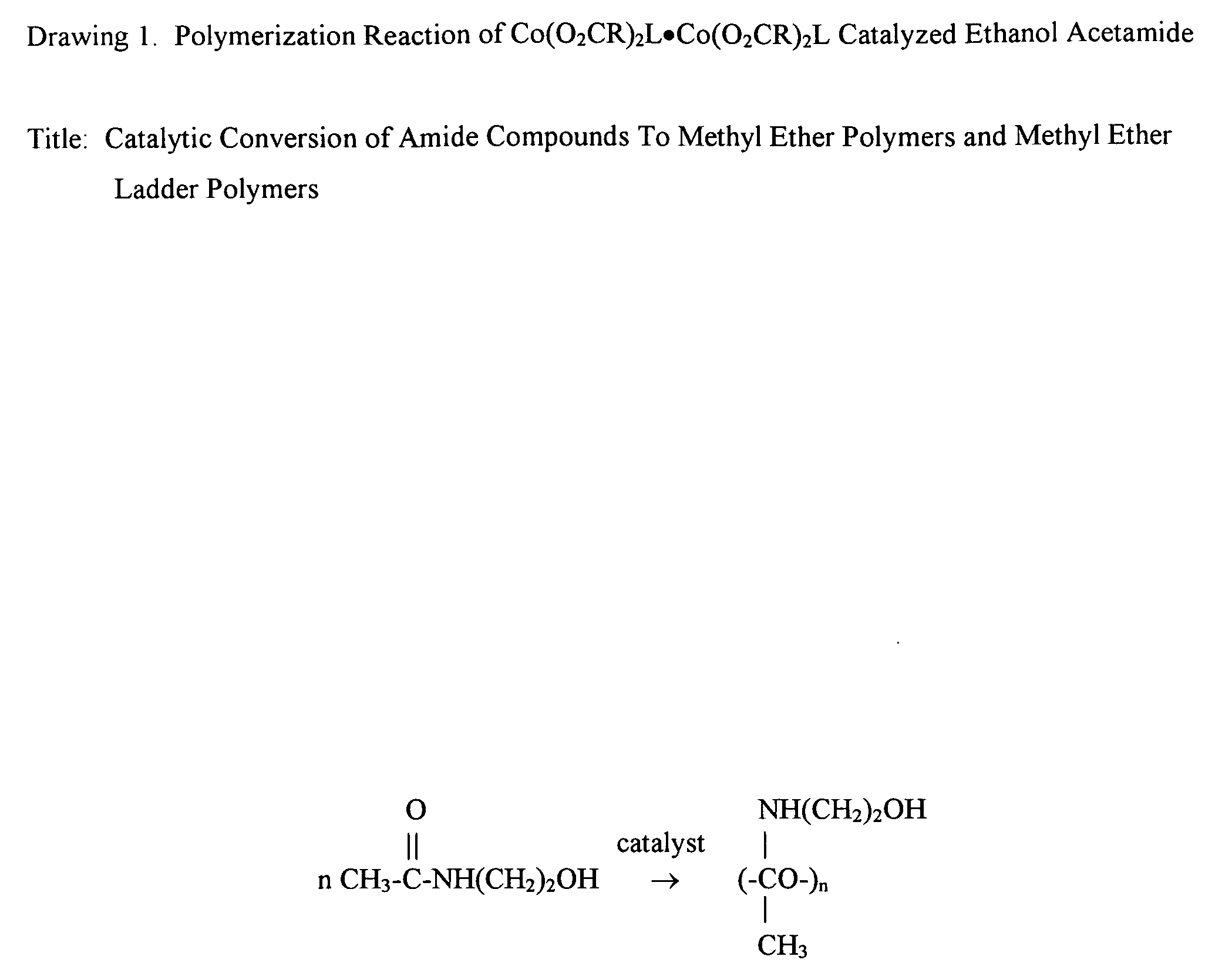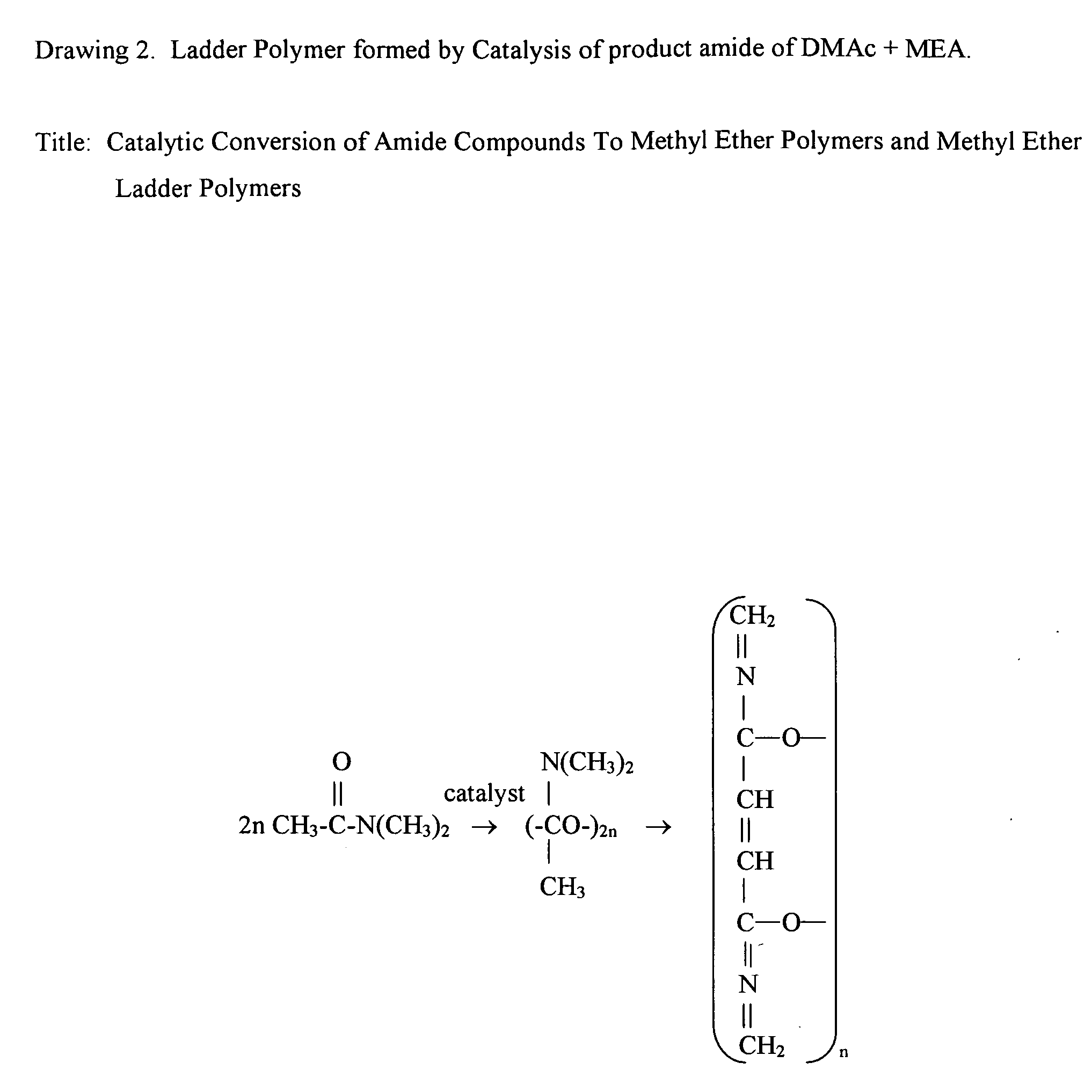Catalytic conversion of amide compounds to methyl ether polymers and methyl ether ladder polymers
a technology of amide compounds and methyl ether, which is applied in the direction of organic compounds/hydrides/coordination complexes, physical/chemical process catalysts, chemical apparatus and processes, etc., can solve the problems of not revealing similar catalytic chemical reaction processes and decomposing to yield no useful products, etc., to facilitate conversion to methyl polyethers
- Summary
- Abstract
- Description
- Claims
- Application Information
AI Technical Summary
Benefits of technology
Problems solved by technology
Method used
Image
Examples
example 1
[0022]Preparation of the Co(O2CR)2L.Co(O2CR)2L catalyst, for L being CaSO4, was conducted using the above process. To 0.0249 gram (0.1 mmol) of cobalt (II) acetate tetrahydrate was added 0.0569 gram (0.2 mmol) of stearic acid, 1.0 gram of calcium sulfate and 0.4 gram of pure water. The mixture was heated to approximately 100° C. for two minutes to form the catalyst.
example 2
[0023]Preparation of the Cr(O2CR)2L.Cr(O2CR)2L catalyst, for L being Li2SO4, was conducted in a similar fashion. To 0.0158 gram (0.1 mmol) of chromium (III) chloride was added 0.0569 gram (0.2 mmol) of stearic acid, 1.0 gram of lithium sulfate, 0.065 gram of zinc dust [to reduce Cr(III) to Cr(II)] in the absence of air and 0.4 gram of pure water. The mixture was heated to approximately 100° C. for two minutes to form the catalyst.
example 3
[0024]Preparation of the V(O2CR)2L.V(O2CR)2L catalyst, for L being K2SO4, was conducted by a process similar to that described above. To 0.0182 gram (0.1 mmol) of vanadium pentoxide was added 0.0569 gram (0.2 mmol) of stearic acid, 1.0 gram of potassium sulfate and 0.4 gram of pure water. The mixture was heated to approximately 100° C. for two minutes to form the catalyst. The mixture turned colorless as the reduced valance vanadium formed at the beginning of the reaction.
PUM
| Property | Measurement | Unit |
|---|---|---|
| Fraction | aaaaa | aaaaa |
| Temperature | aaaaa | aaaaa |
| Spectrum | aaaaa | aaaaa |
Abstract
Description
Claims
Application Information
 Login to View More
Login to View More - R&D
- Intellectual Property
- Life Sciences
- Materials
- Tech Scout
- Unparalleled Data Quality
- Higher Quality Content
- 60% Fewer Hallucinations
Browse by: Latest US Patents, China's latest patents, Technical Efficacy Thesaurus, Application Domain, Technology Topic, Popular Technical Reports.
© 2025 PatSnap. All rights reserved.Legal|Privacy policy|Modern Slavery Act Transparency Statement|Sitemap|About US| Contact US: help@patsnap.com



